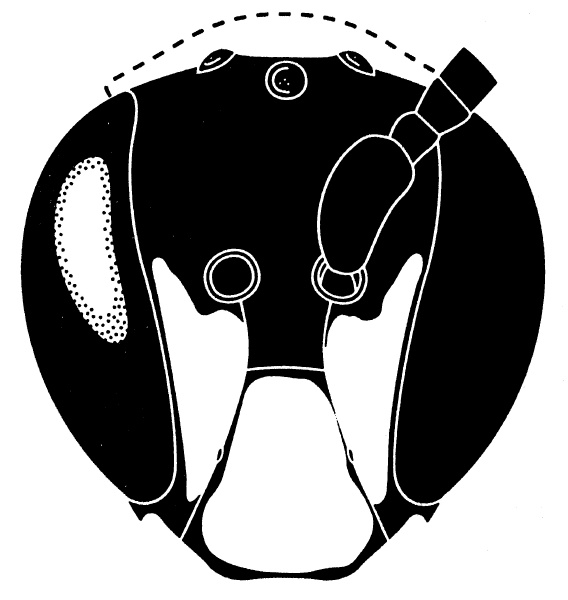Hylaeus in Hawaii

Hylaeus in Hawaii |

|
Hylaeus assimulansIslands: Oahu, Lanai, Kahoolawe, MauiLocations: Lanai - (Manele Rd., Polihua Rd.) Kahoolawe - (Kamohio) Maui - (Kaohonua, Lahainaluna, Makena, Waikapu) Habitats: Coast and dry lowlands Plants: Lipochaeta, Sida Xerces: Hylaeus assimulans is a coastal and dry forest bee endemic to the islands of Oahu, Maui, Kahoolawe, and probably formerly Molokai in Hawaii. It is distinguished by its large size compared to other coastal species, and large facial marks. It is typically found as scattered individuals, and habitat destruction has caused its range to contract significantly. Species Profile 
Insects of Hawaii: Medium to large bees with slightly smoky to smoky wings and short malar spaces. Male with unusual scape, slightly dilated, widest near the middle and smaller at both ends, and with short plumose hair along the median edge; distinguished from larger, more melanic sister species, H. ombrias, by larger facial marks with clypeus always marked and sometimes also the supraclypeal area, lineate rugosity mainly at front halfofpropodeum, and smoky, but not dark, wings. Female black and unmarked, closely resembling H. longiceps and H.flavipes; differing in sculpture of the frons, and usually much larger. Perkins characterized the populations on Oahu as having the males with yellow face marks often much reduced and the wings generally darker; the females with wings entirely infuscate and iridescent in certain lights. He described this type as H. assimulans oahuensis. Male H. assimulans and the sister species, H. ombrias, approximately resemble H. niloticus in color and overlap in body size. The sister species both have the greatest width of the scape near the middle; short, plumose hair along the median edge of the scape; and the median area immediately above the antennal sockets sparsely punctured to impunctate. Hylaeus niloticus has the greatest width of the scape near the apex, mostly simple hair along the median edge, and the median area above the antennal sockets densely punctured. Although H. niloticus is usually much smaller, small specimens of the others have been caught. Insects of Hawaii Volume 17 
UH/DOD: Hylaeus near military lands 
Other: |

|